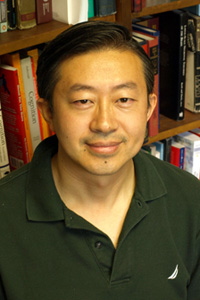Professor Tang Heads New Institute

Yi-Yuan Tang
Director, Texas Tech Neuroimaging Institute;
Presidential Endowed Chair in Neuroscience;
Professor, Department of Psychology, College of Arts & Sciences
The scientist who founded Integrative Body-Mind Training now stands at the helm of Texas Tech's new, cutting-edge Neuroimaging Institute (TTNI).
Yi-Yuan Tang, known internationally for his work in the use of functional MRI (fMRI) to examine brain connectivity, also founded and directed China's first Neuroinformatics Institute. His series of studies in Integrative Body-Mind Training indicate that the technique improves attention, self-regulation, performance and relationship, and has the potential of reducing or preventing various mental disorders. Tang is a fellow of the Association for Psychological Science and has published more than 200 internationally/nationally peer-reviewed articles.
The 10,000-sqare-foot facility he now heads opened in spring 2011. It is located in the Experimental Sciences Building, where faculty, graduate and post-doctoral students conduct research with state-of-the-art brain and body imaging technology, including structural (MRI) and functional magnetic resonance imaging (fMRI).
Put more simply, the Neuroimaging Institute is an interdisciplinary research effort between Texas Tech University and Texas Tech University Health Sciences Center. Tang said the studies taking place here fit the university's strategic plan to foster collaborative bio-behavioral research about mental disorders.
“TTNI will focus on how training and intervention improve cognitive, emotional and social capacities of self-regulation across the lifespan,” Tang said. Research will include “the effects of prevention and intervention on brain mechanisms underlying self-control, stress reduction, ADHD, PTSD, autism, mood disorders, addiction, cancer, aging, expertise development and well-being.”
Psychology Department Chair Lee Cohen said Tang's background brings a much-needed and highly fundable research program into the department. “First, it will allow for expanded collaborations within our department as well as with other departments in Arts and Sciences, other colleges here at Texas Tech and the Health Sciences Center,” Cohen said. “Second, while our department has a history of recruiting very strong doctoral students to our clinical, counseling and experimental psychology programs, given the popularity of this line of work, we will now be able to attract other exceptional doctoral students into our department that would not have considered applying to our programs in the past.”
Headlines already are being made. In June (2012) Tang and other researchers confirmed that, in subjects who practiced Integrative Body-Mind Training for a month, structural efficiency of white matter in the brain can be related to positive behavioral changes.
Tang plans to work with colleagues from interdisciplinary fields at Texas Tech and TTUHSC to build a safe, active and collaborative environment, he said. “We will build on our strengths in neuroscience, psychology, engineering, education, medicine, healthcare and biology and promote new directions in functional imaging, social, cognitive and affective neuroscience, intervention and prevention science, educational neuroscience, neuroeconomics, human development and neuroinformatics.”
What's in it for students?
“TTNI is in a unique position to conduct the interdisciplinary research. We are open to students from diverse background and field. Students could learn from the basic and clinical research projects, be trained by various PIs and prepare for future careers,” Tang said. “We believe that the combination of behavioral, brain and physiological research will not only advance their scientific understanding of certain topics such as mental disorders or imaging analysis and modeling, but will simultaneously provide valuable experiences in our neuroscience and neuroimaging community.”
College of Arts & Sciences
-
Address
Texas Tech University, Box 41034, Lubbock, TX 79409-1034 -
Phone
806.742.3831 -
Email
arts-and-sciences@ttu.edu
